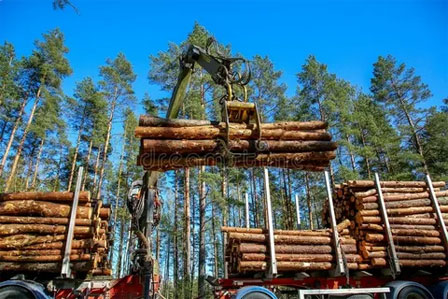The Role of Forestry Management in Sustainable Land Use
Forests are one of our planet’s most valuable natural resources. They provide oxygen, store carbon, support biodiversity, and offer raw materials for industries such as construction and paper production. However, without responsible forestry management, excessive logging, land degradation, and deforestation can threaten these vital ecosystems. Sustainable land use through effective forestry management ensures that forests remain healthy, productive, and capable of meeting both current and future needs.
Understanding Forestry Management
Forestry management refers to the careful planning and execution of practices that protect, maintain, and enhance forest ecosystems. It involves balancing timber harvesting with conservation efforts, ensuring that forests can regenerate while continuing to provide economic and environmental benefits.
Key Goals of Forestry Management
1. Sustainable Timber Harvesting – Ensuring that trees are harvested responsibly so that forests continue to thrive.
2. Soil and Water Conservation – Protecting soil quality and preventing water pollution from logging activities.
3. Biodiversity Preservation – Maintaining the natural habitat for wildlife and plant species.
4. Carbon Sequestration – Helping forests absorb and store carbon to mitigate climate change.
5. Long-Term Land Productivity – Keeping forest land viable for future generations.
How Forestry Management Promotes Sustainable Land Use
1. Selective Timber Harvesting
Rather than clear-cutting large sections of forest, sustainable forestry practices focus on selective harvesting—removing only mature trees while leaving younger ones to grow. This method ensures continuous regeneration and maintains the forest’s ecological balance.
• Prevents excessive deforestation.
• Supports wildlife by preserving natural habitats.
• Encourages healthier tree growth for future harvests.
2. Reforestation and Afforestation
Replanting trees after logging is a crucial aspect of sustainable forestry. Reforestation involves planting new trees in areas where logging has occurred, while afforestation refers to creating forests in previously non-forested areas. Both practices help:
• Restore forest cover.
• Improve air quality by absorbing carbon dioxide.
• Enhance biodiversity by providing homes for various species.
3. Soil and Water Conservation Practices
Logging and land clearing can lead to soil erosion and water pollution if not managed properly. Sustainable forestry includes strategies such as:
• Using buffer zones around rivers and streams to prevent contamination.
• Applying mulching techniques to protect exposed soil.
• Implementing controlled logging roads to reduce soil compaction and erosion.
By preserving soil and water quality, forestry management ensures that the land remains productive and supports plant and animal life.
4. Wildlife and Ecosystem Protection
Forests serve as crucial habitats for numerous species. Poor forestry practices can lead to habitat destruction and endanger wildlife populations. Sustainable forestry management:
• Leaves wildlife corridors for animals to move safely.
• Maintains deadwood and undergrowth to support small mammals and insects.
• Limits logging in sensitive areas, such as wetlands and old-growth forests.
5. Carbon Storage and Climate Change Mitigation
Trees play a significant role in absorbing carbon dioxide and helping combat climate change. Sustainable forestry management ensures that forests continue to act as carbon sinks, reducing greenhouse gas levels in the atmosphere. By planting trees and preventing excessive deforestation, forestry management contributes to a more stable climate.
The Role of Landowners and Forestry Professionals
Sustainable land use requires the collaboration of landowners, forestry experts, and environmental organizations. Landowners play a crucial role by:
• Partnering with professional forestry services to develop management plans.
• Choosing responsible harvesting methods that align with long-term sustainability goals.
• Monitoring forest health and preventing diseases or invasive species from spreading.
Forestry professionals provide expertise in sustainable logging, conservation techniques, and land restoration. Their role is to ensure that forests are used responsibly while maintaining their environmental benefits.
Balancing Economic and Environmental Interests
One of the challenges in forestry management is balancing economic needs with environmental responsibility. Timber harvesting is essential for industries and livelihoods, but it must be done without compromising the health of forest ecosystems. Sustainable forestry management achieves this balance by:
• Using harvesting rotations to allow forests to regenerate.
• Promoting certified sustainable wood products that come from responsibly managed forests.
• Encouraging landowners to invest in long-term forestry planning instead of short-term profits.
Closing Thoughts
Forestry management is at the heart of sustainable land use. By implementing responsible logging practices, reforesting harvested areas, conserving soil and water, and protecting biodiversity, we can ensure that forests remain a thriving resource for generations to come.
Whether you’re a landowner, a timber industry professional, or simply someone who cares about the environment, supporting sustainable forestry practices is essential. Through careful management, we can continue to benefit from forests while preserving their natural beauty and ecological importance.




 402 Puckett Br Dr Fort Gay WV 25514
402 Puckett Br Dr Fort Gay WV 25514